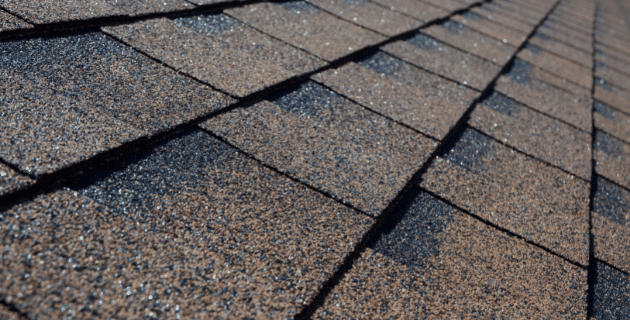You have a roof over your head, but chances are you’re probably not thinking too much about it. That’s because—unless your roof needs repair or replacement— there really is no reason to worry about it.
The best way to know if your roof needs to be repaired or replaced is to hire a professional to come out and take a look. We’ve compiled a quick guide on roofs and roof damage, including what to look for, so you’ll be well informed when it comes time to repair or get a new roof.
Types of Roofs
Roofs are made from different kinds of material. Some of the most common include:
-
- Asphalt: This is the most affordable roofing material (and likely what is on your house). Asphalt shingles come in basic and also higher-end versions.
- Slate: One of the most expensive roofs you can buy, its shingles are made from slate tiles. They are very heavy, requiring a roof system that can bear their weight.
- Composite: These types of shingles are made from rubber, plastic and other recycled materials. They can be made to look like a cedar shake or slate roof.
- Metal: A standing seam metal roof consists of metal panels that are locked together.
There are other types of roofing materials from concrete to clay shingles and beyond, including green roofs which use gardens to top a house. Knowing the type of roof on your house is the first step to being able to repair or replace it.
Types of Roof Damage
Punctures and cracks, loose and broken shingles, damage from moisture, and worn-out roofing materials must be addressed or your roof could fail to do its job. Here’s what you might expect due to weather and over time.
-
- Water damage: Moisture gets into the cracks and crevices, and causes mildew, mold, moss, and decay.
- Hail damage: Large pieces of hail can make dents in your shingles and destroy the roof’s metal finishes. It can lead to roof leaks.
- Snow and ice damage: Heavy snow and ice can put stress on your roof, potentially causing its collapse. It also puts wear and tear on your shingles.
- Wind damage: Strong winds can rip off shingles and cause debris to hit your roof and damage it.
- Tree or branch damage: When a tree falls on your home or if you fail to keep your branches trimmed, they can put a hole in your roof, requiring immediate action.
How to Check Your Roof for Damage
It’s a good idea to check your roof for damage after a storm or other weather event, and you don’t have to get up on the roof to do it. (Leave on-the-roof exploration to the professionals, unless you are experienced at it.)
Start with a pair of binoculars on ground level. Point them toward your roof and look for obvious damage.
-
- Check for debris that may still be on your roof or clogging your gutters.
- See if there are damaged, cracked, or missing shingles. Get an approximate count and note their location.
- With asphalt roofs, look for curled edges, bubbling or blistering.
- Check for smooth dark areas that could indicate mold.
- Check for signs of moss.
- Look for signs of sagging.
- See if your gutters or downspouts have loosened or broken.
- Check the flashing, which is aluminum or steel used to cover joints in the roof, to see if it is damaged or loose.
- If you do go up on your roof, check for a bounce when you walk across it. That happens if a roof is spongy from moisture.
If you have an attic, you can assess roof damage there as well.
-
- Look for water stains that run from the ceiling to the walls.
- Check for leaks.
- Look for gaps or cracks in seals on skylights, chimney, and vents (most easily seen when lights are off in the attic and it’s a sunny day).
- Check for any signs of animal life that could indicate a hole.
- Look for shiners (nails sticking out on the underside of the roof). They’re easier to spot on a cold night. Moisture condenses on these nails, turning them white with frost.
If you don’t have an attic, you can still check for leaks and water stains on the ceiling, and along any walls or skylights. Wherever you find damage, take a picture if you can, as a reference for contractor repairs or your insurance company.
Repair or Replace
On the outside– Damaged shingles are roof leaks waiting to happen. Clogged gutters are the precursor to water damage. These instances put your roof at risk for future problems. Routine maintenance and frequent checking of your roof should help you identify these risks before they become a problem.
On the inside– You may only be aware of some of the damage through your on-the-ground and in-attic check. If you believe there is significant damage, consult a professional roof inspector. They can use hi-tech equipment including infrared sensors and drones to examine your roof.
Make sure you are protected by speaking to your home insurance provider. They will be able to review your policy with you and make sure you have the proper roof coverage that you need.
This article is furnished by California Casualty, providing auto and home insurance to educators, law enforcement officers, firefighters, and nurses. Get a quote at 1.866.704.8614 or www.calcas.com
- Graduation – When to Remove Your Child from Your Auto Policy - May 18, 2023
- How to Prevent Catalytic Converter Theft - May 17, 2023
- How Much Does Home Insurance Cost? - May 17, 2023

